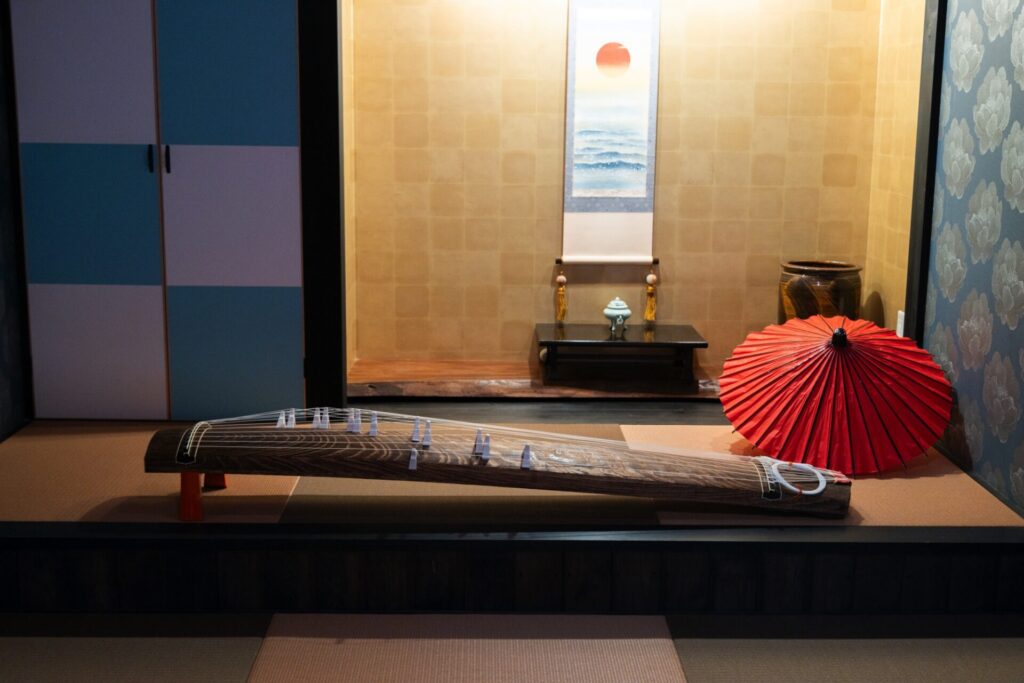
Discover the Charm of Japanese Instruments
If you’re interested in traditional Japanese culture, you’ve probably heard of the koto and shamisen. Both play beautiful melodies, but many people wonder, “What exactly makes them different?” These two instruments, vastly distinct in appearance and sound, each boast their own unique history and cultural background.
In this article, we’ll thoroughly explain the differences between the koto and shamisen in an easy-to-understand way for beginners. From their shapes, timbre, and playing methods to their profound individual charms, we’ll unravel each aspect. After reading this article, you’ll surely become captivated by the world of wagakki (traditional Japanese instruments). So, why not open the door to Japanese instruments with us?
◇You Can Tell at a Glance! The Decisive Differences Between the Koto and Shamisen
Let’s start by looking at the shape of each instrument. You can tell at a glance just how different the koto and shamisen are.
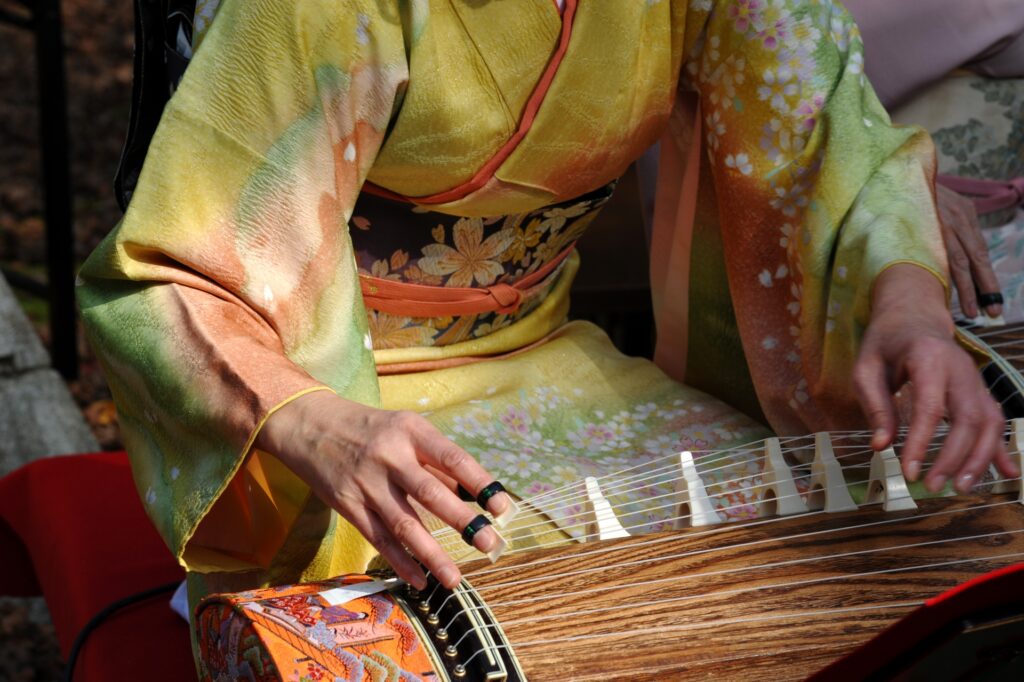
-The Long “Koto” Shape and the Secret to its Sound
The koto is long, about 180cm (approx. 5.9 feet), and shaped like a slender box. It’s primarily made from paulownia wood, with 13 strings stretched across its surface. Beneath these strings are movable supports called “ji” (柱), which are adjusted to change the pitch. The koto’s long, flat body is the secret behind its expansive and rich timbre.
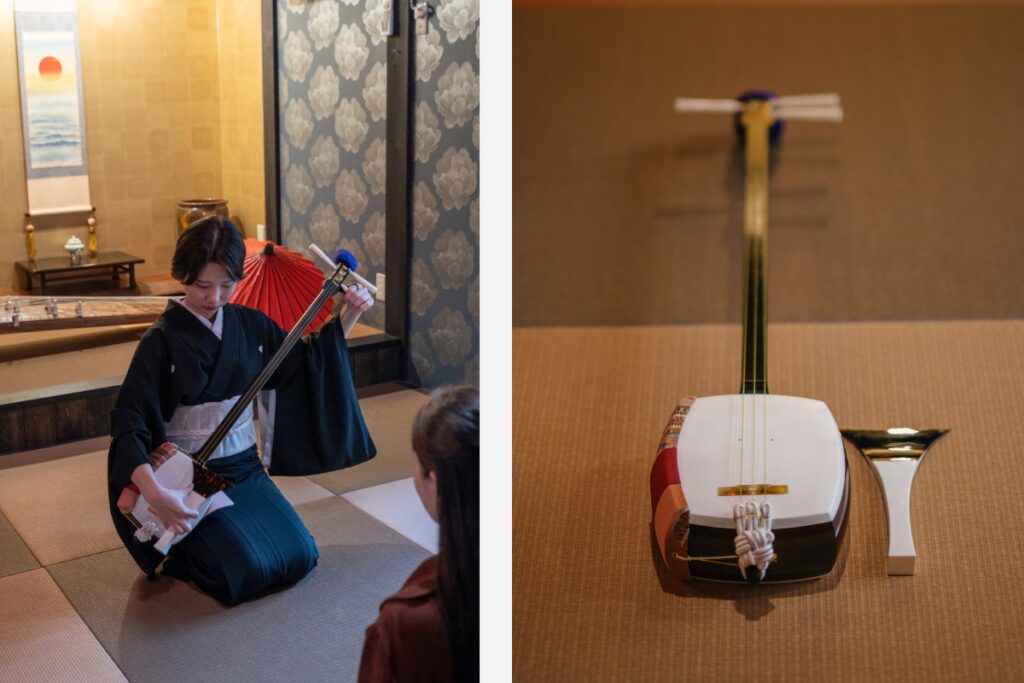
–The Slender “Shamisen” Shape and the Source of its Rhythm
In contrast, the shamisen is much more compact than the koto, typically around 100cm (approx. 3.3 feet) long. It features a slender neck (sao) connected to a square body (do), with just three strings. These strings are plucked or struck with a large pick called a “bachi” (撥). The shamisen’s body is often covered with cat or dog skin, which produces its powerful rhythm and distinctive resonance.
“Koto” vs. “Sou”? Clearing Up the Naming Confusion!
You often hear the word “koto” (琴), which is frequently used interchangeably with “sou” (箏). Strictly speaking, “koto” (琴) refers to an instrument where the strings are fixed to produce pitch without movable bridges, while “sou” (箏) uses movable bridges (ji) to change pitch. However, in modern times, “koto” (琴) is almost always used to refer to the “sou” (箏), so beginners can consider them to be the same.
◇Listen and Compare! The Difference in Koto and Shamisen Timbre
Beyond their appearance, the koto and shamisen produce completely different timbres. Let’s compare the unique sounds of each wagakki.
-The Healing, Gentle Sound of the Koto

The koto’s timbre is incredibly elegant and expansive. It’s characterized by a delicate, flowing sound, much like water. It’s frequently used in Japanese gagaku (court music) and jiuta-sōkyoku (traditional koto music), and is said to have a calming and relaxing effect on listeners. It’s a sound that symbolizes quiet, profound Japanese culture.
-The Passionate, Powerful Sound of the Shamisen
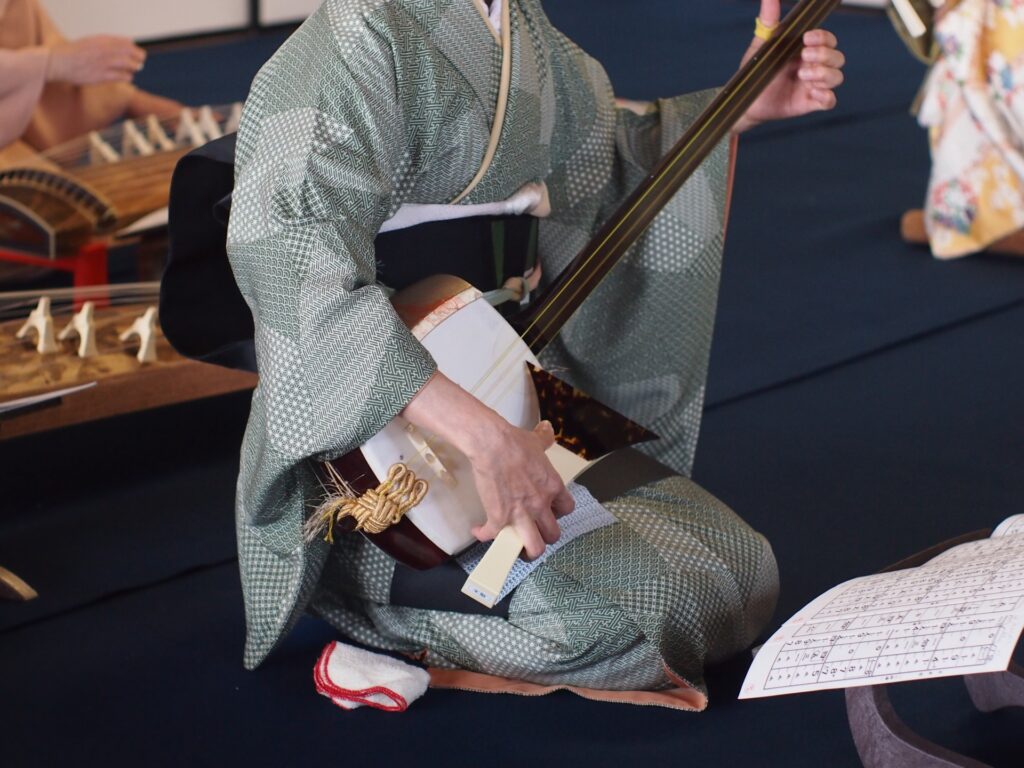
In contrast, the shamisen’s timbre is powerful and sometimes passionate. The characteristic “ben-ben” sound produced by striking the strings with a bachi is rhythmic and impactful. It features prominently in various genres like min’yō (folk songs), nagauta (long songs for Kabuki), and gidayū-bushi (narrative chanting for puppet theater), evoking the lively atmosphere of festivals and Kabuki scenes. It’s truly a quintessential wagakki brimming with dynamism.
◇History and Culture! The Differences Between the Koto and Shamisen
The koto and shamisen have each played distinct historical and cultural roles.
-The Koto’s History: Adorning the Imperial Court
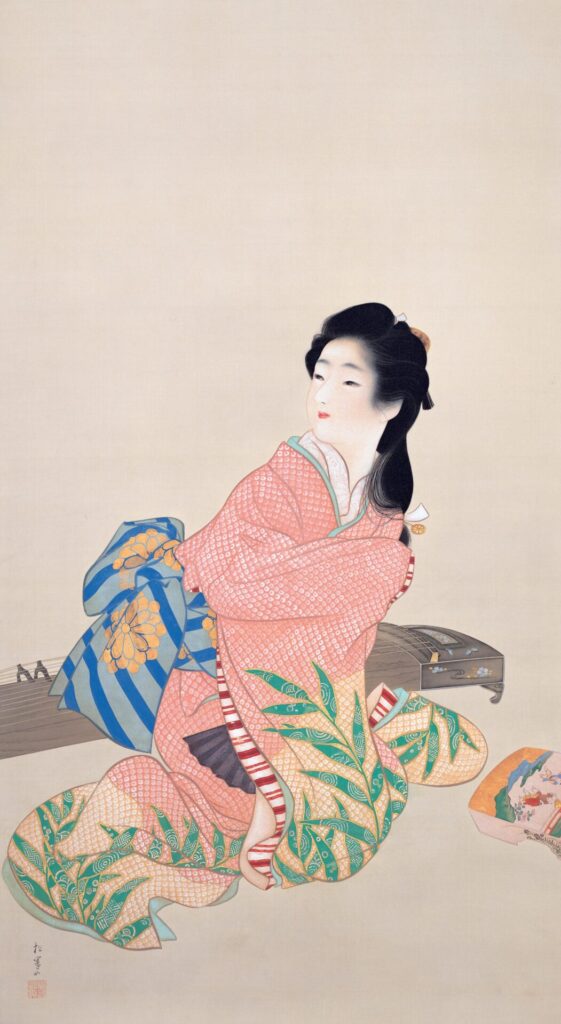
The koto arrived in Japan from China during the Nara period. It was primarily enjoyed by the imperial court and aristocracy and developed alongside gagaku. Consequently, many formal and ancient pieces exist for the koto, and it is considered an instrument symbolizing refined aesthetics within Japanese culture. It is a venerable wagakki that has supported Japan’s traditional performing arts for over a millennium.
-The Shamisen’s History: Nurtured by the Common People
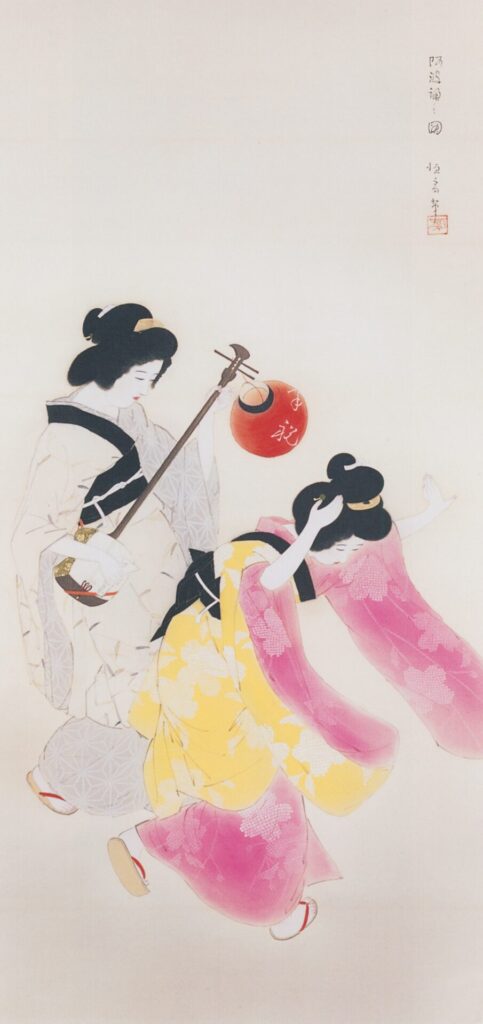
On the other hand, the shamisen is believed to have arrived in Japan around the 16th century via Ryukyu (present-day Okinawa). Unlike the koto, it rapidly gained popularity among samurai and common people. It became closely intertwined with popular entertainment like Kabuki and Bunraku puppet theater, and has been played in various genres such as min’yō and hauta (short songs). The shamisen can be considered a familiar Japanese instrument that has accompanied and evolved with people’s lives.
Two Wagakki That Color Japanese Culture
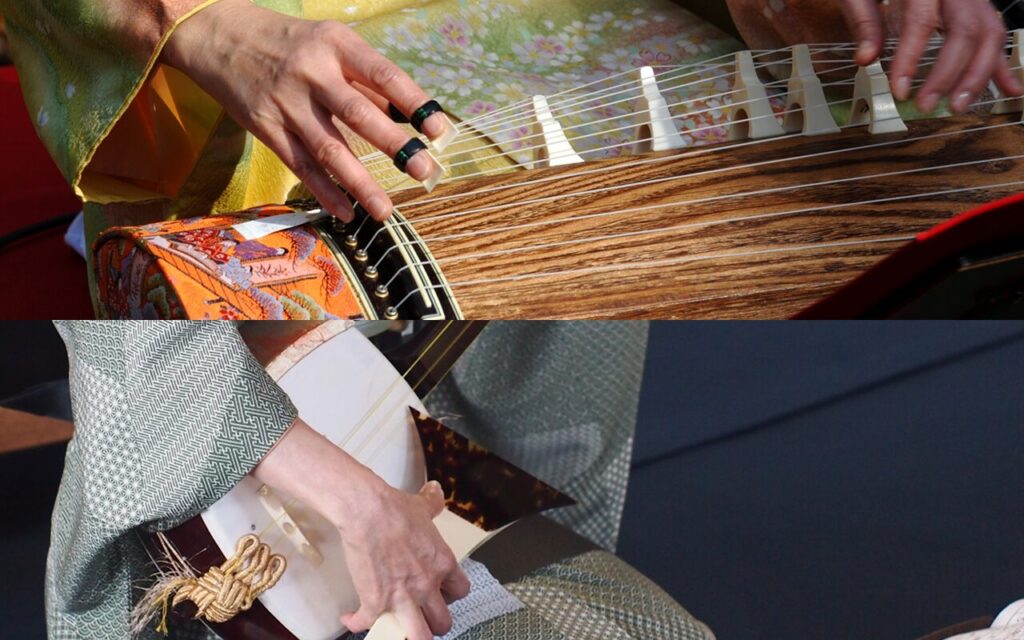
The koto and shamisen are truly unique Japanese instruments, differing entirely in appearance, timbre, and historical background. The koto, with its elegant and delicate sound, calms the mind and has been a refined instrument cherished by the imperial court and upper classes since ancient times. The shamisen, on the other hand, captivates people with its powerful and passionate rhythms, a familiar instrument that has developed alongside common people’s lives, Kabuki, and folk songs.
If you’re wondering, “Which wagakki should I start with?”, the best approach is to listen to the timbre of each and choose the one that resonates with you most. Participating in a trial lesson where you can actually touch the instrument would also be beneficial. By experiencing their unique sounds and the joy of playing firsthand, you’re sure to find the perfect Japanese instrument for you. We hope this article serves as a wonderful starting point for you to step into the profound world of wagakki.

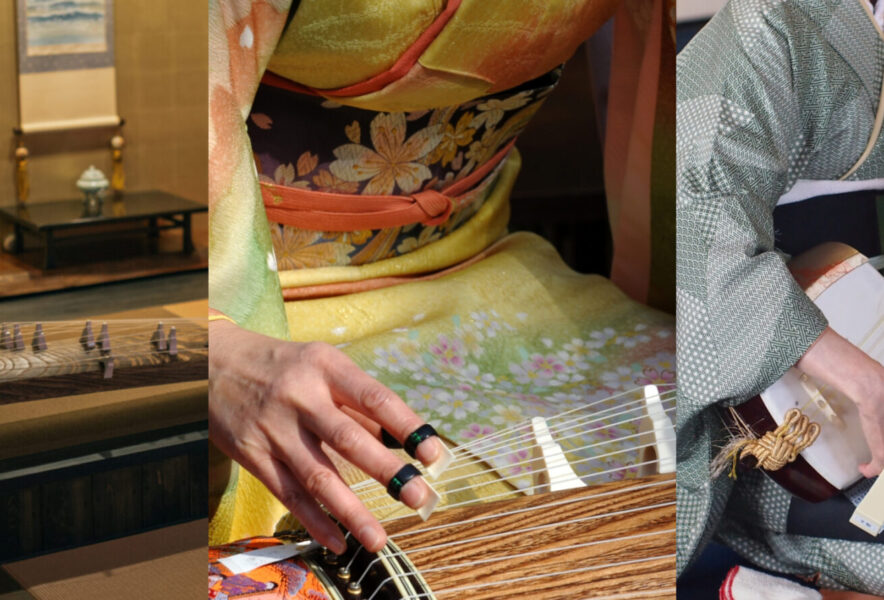
Comment